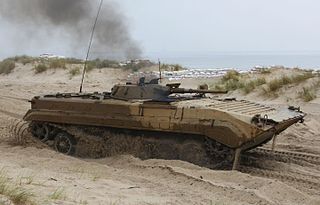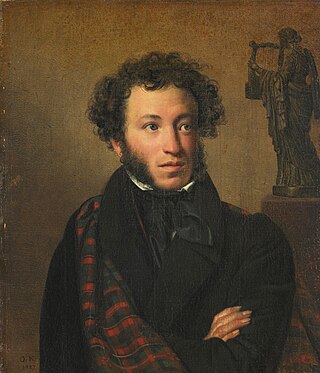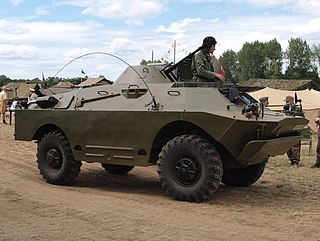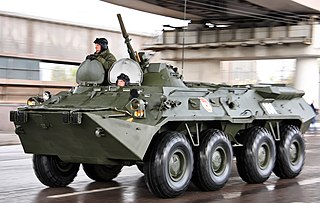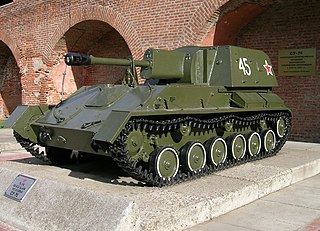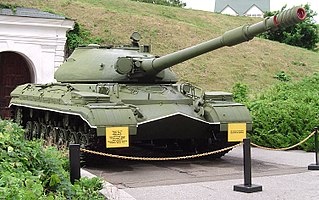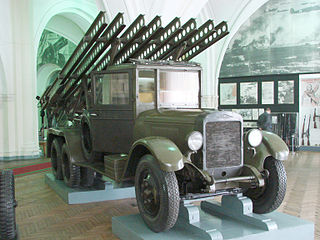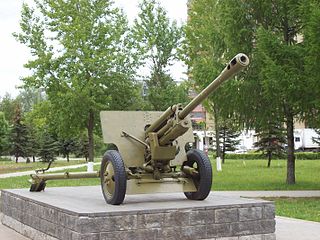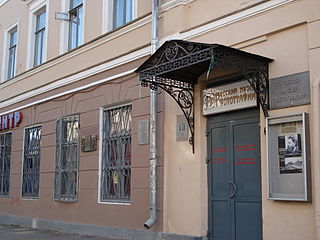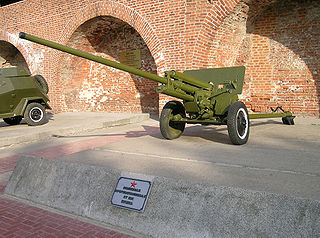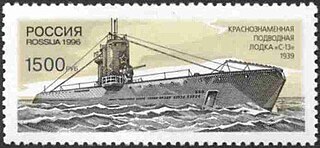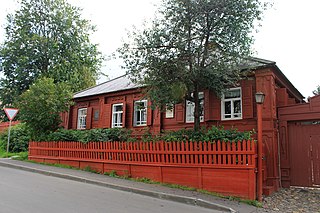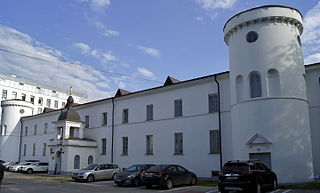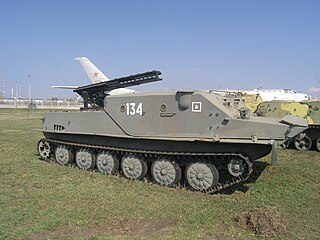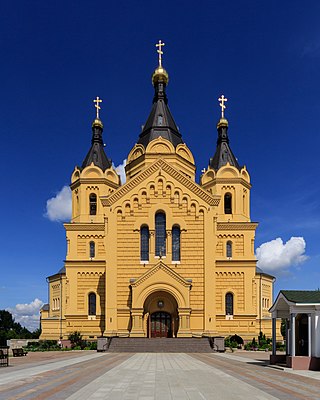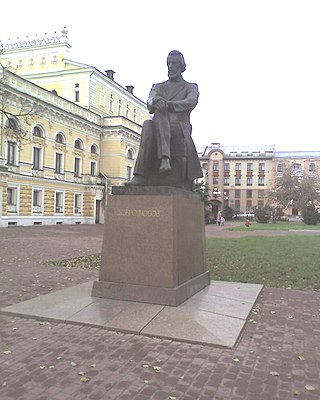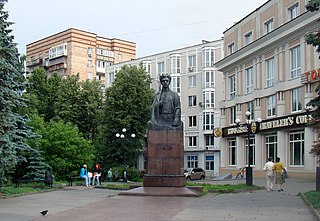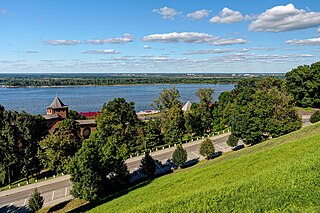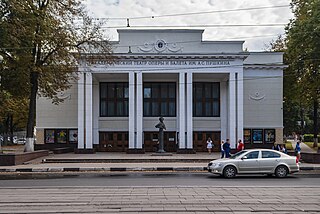25 Sights in Nizhny Novgorod, Russia (with Map and Images)
Legend
Welcome to your journey through the most beautiful sights in Nizhny Novgorod, Russia! Whether you want to discover the city's historical treasures or experience its modern highlights, you'll find everything your heart desires here. Be inspired by our selection and plan your unforgettable adventure in Nizhny Novgorod. Dive into the diversity of this fascinating city and discover everything it has to offer.
Sightseeing Tours in Nizhny Novgorod1. БМП-1
The BMP-1 is a Soviet amphibious tracked infantry fighting vehicle that has been in service from 1966 to the present. BMP stands for Boyevaya Mashina Pyekhoty 1, meaning "infantry fighting vehicle, 1st serial model". The BMP-1 was the first mass-produced infantry fighting vehicle (IFV) of the Soviet Union. It was called the M-1967, BMP and BMP-76PB by NATO before its correct designation was known.
2. А. С. Пушкину
Alexander Sergeyevich Pushkin was a Russian poet, playwright, and novelist of the Romantic era. He is considered by many to be the greatest Russian poet, as well as the founder of modern Russian literature.
3. БРДМ-2
The BRDM-2 is an amphibious armoured scout car designed and developed in the Soviet Union. It was also known under the designations BTR-40PB, BTR-40P-2 and GAZ 41-08. This vehicle, like many other Soviet designs, has been exported extensively and is in use in at least 38 countries. It was intended to replace the older BRDM-1, and has improved amphibious capabilities and better armament compared to its predecessor. The BRDM-2 production continues in Poland as of 2022.
4. БТР-80
The BTR-80 is an 8×8 wheeled amphibious armoured personnel carrier (APC) designed in the Soviet Union. It was adopted in 1985 and replaced the previous vehicles, the BTR-60 and BTR-70, in the Soviet Army. It was first deployed during the Soviet–Afghan War.
5. Артиллерия СУ-76
The SU-76 was a Soviet light self-propelled gun used during and after World War II. The SU-76 was based on a lengthened version of the T-70 light tank chassis and armed with the ZIS-3 mod. 1942 76-mm divisional field gun. Developed under the leadership of chief designer S.A. Ginzburg (1900–1943). Its quite simple construction and multipurpose combat role made it the second most produced Soviet armored fighting vehicle of World War II, after the T-34 medium tank.
6. Т-10М
The T-10 was a Soviet heavy tank of the Cold War, the final development of the IS tank series. During development, it was called Object 730. It was accepted into production in 1953 as the IS-8, but due to the political climate in the wake of Stalin's death in 1953, it was renamed T-10.
7. «Катюша» БМ-13
BM-13-Soviet combat vehicle of reactive artillery of the Second World War period The most massive Soviet combat vehicle (BM) of this class. The most widely known under the folk nickname “Katyusha”, the soldiers of Nazi Germany called it “Stalin's Organ” due to the sound made by rocket plumes.
8. БТР-70
The BTR-70 is an eight-wheeled armored personnel carrier originally developed by the Soviet Union during the late 1960s under the manufacturing code GAZ-4905. On August 21, 1972, it was accepted into Soviet service and would later be widely exported. Large quantities were also produced under license in Romania as the TAB-77.
9. Истребитель ЛА-7
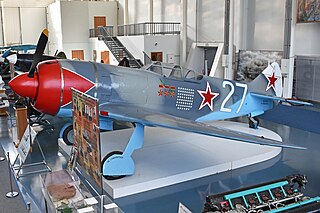
The Lavochkin La-7 was a piston-engined single-seat Soviet fighter aircraft developed during World War II by the Lavochkin Design Bureau. It was a development and refinement of the Lavochkin La-5, and the last in a family of aircraft that had begun with the LaGG-1 in 1938. Its first flight was in early 1944 and it entered service with the Soviet Air Forces later in the year. A small batch of La-7s was given to the Czechoslovak Air Force the following year, but it was otherwise not exported. Armed with two or three 20 mm (0.8 in) cannon, it had a top speed of 661 kilometers per hour (411 mph). The La-7 was felt by its pilots to be at least the equal of any German piston-engined fighter. It was phased out in 1947 by the Soviet Air Force, but served until 1950 with the Czechoslovak Air Force.
10. Побег из ада
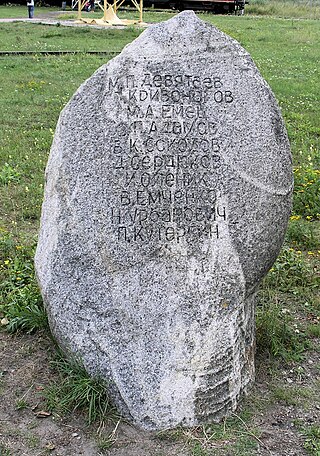
The escape of the Devyatayev group was the escape of a group of ten Soviet prisoners of war led by fighter pilot M. P. Devyatayev on a captured German Heinkel He 111 bomber aircraft on February 8, 1945 from a German concentration camp at the Peenemünde training ground.
11. 76-мм пушка ЗиС-3
The 76-mm divisional gun M1942 (ZiS-3) was a Soviet 76.2 mm divisional field gun used during World War II. ZiS was a factory designation and stood for Zavod imeni Stalina, the honorific title of Artillery Factory No. 92, which first constructed this gun.
12. Бронеавтомобиль БА-64
The BA-64 was a Soviet four-wheeled armoured scout car. Built on the chassis of a GAZ-64 or GAZ-67 jeep, it incorporated a hull loosely modeled after that of the Sd.Kfz. 221. The BA-64 was developed between July and November 1941 to replace the BA-20 then in service with armoured car units of the Red Army. Cheap and exceptionally reliable, it would later become the most common Soviet wheeled armoured fighting vehicle to enter service during World War II, with over 9,000 being manufactured before production ended.
13. Русский музей фотографии
The Russian Museum of Photography in Nizhny Novgorod is a state budgetary institution of culture in the Nizhny Novgorod region. The museum has an extensive collection of photographic documents and photographic equipment of the XIX-XX centuries. The Russian Museum of Photography hosts such significant photo events of regional and Russian scale as the Volga Biennale, the Svetopis, and the Nizhny Novgorod Regional Festival of Photography.
14. 57-мм пушка ЗиС-3
The ZiS-2 is a Soviet 57 mm anti-tank gun used during World War II. The ZiS-4 is a version of the gun that was meant to be installed in tanks. ZiS stands for Zavod imeni Stalina, the official title of Artillery Factory No. 92, which produced the gun first.
15. Рубка подводной лодки С-13
S-13 was an S-class submarine of the Soviet Navy. Her keel was laid down by Krasnoye Sormovo in Gorky on 19 October 1938. She was launched on 25 April 1939 and commissioned on 31 July 1941 in the Baltic Fleet, under the command of Captain Pyotr Malanchenko. The submarine is best known for the 1945 sinking of Wilhelm Gustloff, a German military transport ship/converted cruise ship. With a career total of 44,701 GRT sunk or damaged, she is the highest-scoring Soviet submarine in history.
16. Зенитная пушка 52-К
.jpg)
The 85 mm air defense gun M1939 (52-K) was an 85 mm (3.3 in) Soviet anti-aircraft gun, developed under guidance of leading Soviet designers M. N. Loginov and G. D. Dorokhin. This gun was successfully used throughout the Second World War against level bombers and other high- and medium-altitude targets. In emergencies they were utilized as powerful anti-tank weapons. The barrel of the 52-K was the basis for the family of 85-mm Soviet tank guns. After the war some 52-Ks were refitted for peaceful purposes as anti-avalanche guns in mountainous terrain.
17. Василий Маргелов
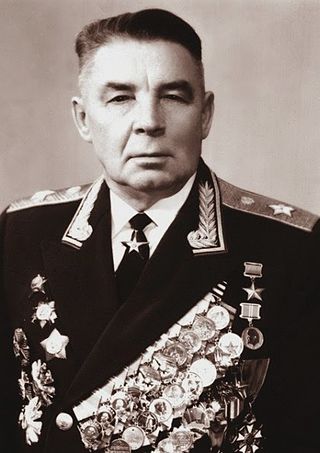
Vasily Filippovich Margelov was a Red Army General who was the commander of the Soviet Airborne Forces (VDV) from 1954 to 1959 and from 1961 to 1979. Margelov modernized the VDV and was a Hero of the Soviet Union.
18. Домик Каширина
Kashirin's House is a museum located in Nizhny Novgorod, Postal Congress, 21, in the house of M. Gorky's maternal grandfather (A. M. Peshkov). An object of cultural heritage of the peoples of the Russian Federation of federal significance.
19. Нижегородский острог
The Nizhny Novgorod prison is a former prison in the historical center of Nizhny Novgorod. The prison is a complex of a prison and an administrative building. It is built in the form of a rectangle with four towers in the corners. The entire territory is surrounded by a brick wall. It is currently used as a museum. Located at the address: Nizhny Novgorod, Svobody Square, 2a.
20. УР-67
UR-67 is a Soviet demining installation. It was created on the basis of the BTR-50PK amphibious armored personnel carrier. It was put into service in 1968. In 1978, instead of the UR-67, the production of next-generation UR-77 demining installations was established. Currently, there are no UR-67s in the troops of the Russian Armed Forces.
21. Собор Александра Невского
The Alexander Nevsky Cathedral is a Russian Orthodox cathedral church located in the Kanavinsky city district of Nizhny Novgorod. The cathedral is located on the former territory of the Nizhny Novgorod Fair. It is one of the unofficial symbols of Nizhny Novgorod, along with the Dmitrovskaya Tower of the Kremlin, the Chkalov staircase and the fair.
22. Н. А. Добролюбову
The monument to N. A. Dobrolyubov is located in the city of Nizhny Novgorod, in the square on Teatralnaya Square, on the right side of the building of the Academic Drama Theater. Here nearby was the house in which the literary critic and publicist N. A. Dobrolyubov (1836-1861) was born.
Wikipedia: Памятник Н. А. Добролюбову (Нижний Новгород) (RU)
23. Я. М. Свердлову
The monument to Y. M. Sverdlov in Nizhny Novgorod is located in the park at the corner of Bolshaya Pokrovskaya and Oktyabrskaya streets. The opening of the monument took place on November 5, 1957 by sculptors P. I. Gusev and N. M. Chugurin, architect V. N. Rymarenko.
24. Губернаторский сад
The Governor's Garden is a park located in the historical center of Nizhny Novgorod, on the territory of the Nizhny Novgorod Kremlin. It was designed in 1836 in the English style by the chief gardener of the expedition of the Kremlin building, Franz Semyonovich Pelzel.
25. Театр оперы и балета
The Nizhny Novgorod State Academic Opera and Ballet Theater named after A. S. Pushkin is a Nizhny Novgorod theater founded in 1935 as the Gorky Opera and Ballet Theater. It is located in the Sovetsky district of Nizhny Novgorod. The number of seats in the auditorium is 1152.
Wikipedia: Нижегородский государственный академический театр оперы и балета имени А. С. Пушкина (RU), Website
Share
How likely are you to recommend us?
Disclaimer Please be aware of your surroundings and do not enter private property. We are not liable for any damages that occur during the tours.
